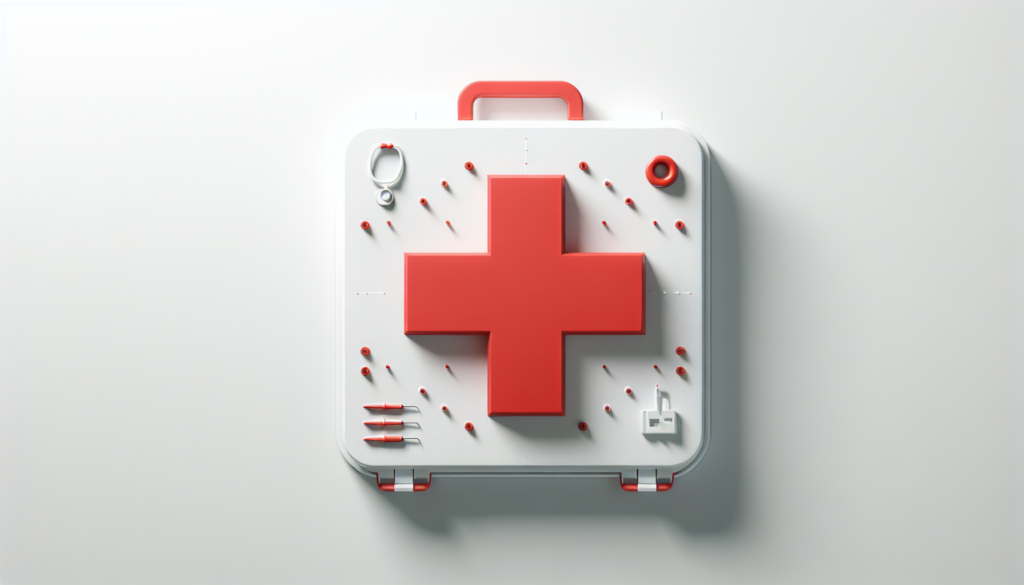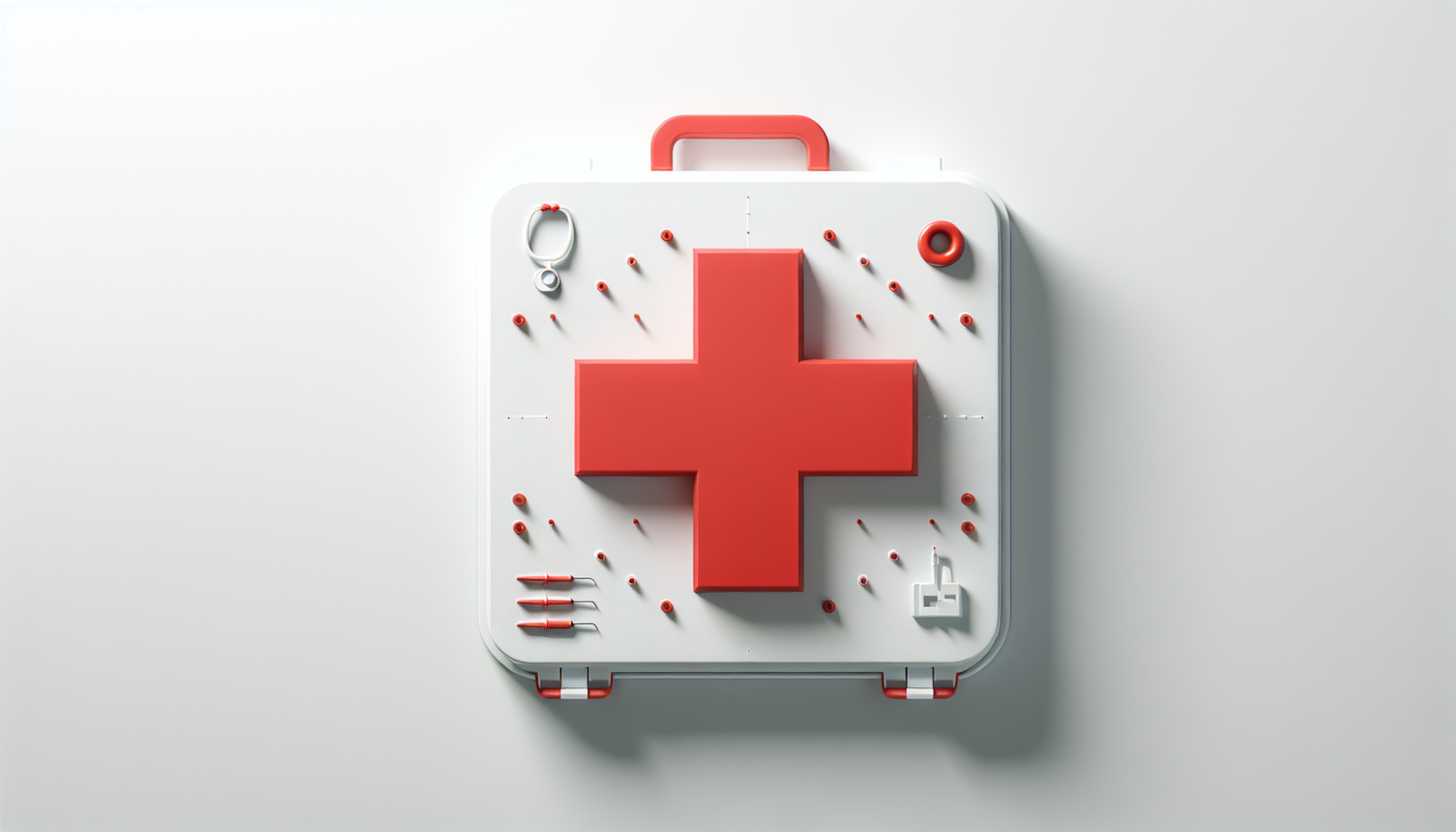Imagine you’re out on a hike, enjoying the great outdoors, when suddenly, a fellow adventurer takes a tumble and suffers a minor injury. Lucky for them, you’re prepared with a comprehensive first aid kit. But what exactly are the top 10 must-have items that should be in every first aid kit? From bandages to antiseptic wipes, this article will guide you through the essential items that will help you handle any minor mishap along your journey. So, before you set off on your next adventure, make sure your first aid kit is fully stocked with these vital supplies.
Top 10 must-have items for a comprehensive first aid kit
When it comes to being prepared for any emergency or accident, having a comprehensive first aid kit is absolutely essential. Whether you are traveling, camping, or simply want to ensure the safety of your loved ones at home, a well-stocked first aid kit can make all the difference in providing immediate care and potentially preventing further complications. To help you build a comprehensive first aid kit, here are the top 10 must-have items that should be in every kit:

Bandages and dressings
Bandages are an absolute necessity in any first aid kit. They are versatile and can be used to cover wounds, stop bleeding, or secure dressings in place. Having a variety of adhesive bandages in different sizes is crucial, as they can be used for minor cuts and scrapes. Additionally, having sterile gauze rolls, non-stick sterile pads, elastic bandages, and triangular bandages should also be included to provide ample coverage for various types of injuries.
Antiseptic solutions
To prevent infections, it is essential to include antiseptic solutions in your first aid kit. Hydrogen peroxide, antiseptic wipes, alcohol-based hand sanitizer, and antibiotic ointment are all vital for cleaning and disinfecting wounds. These solutions help to kill bacteria and limit the risk of infections, ultimately aiding in the healing process.
Medical adhesive tape
Medical adhesive tape is crucial for securing bandages and dressings in place. Choosing hypoallergenic adhesive tape ensures that it is suitable for individuals with sensitive skin. Additionally, including paper tape and waterproof adhesive tape can offer additional options for securing dressings, especially in situations where water is involved.
Disposable gloves
When providing first aid, it is important to protect yourself and the injured person from potential infections. Disposable gloves, such as latex or nitrile gloves, should always be included in your first aid kit. These gloves act as a barrier, preventing the transfer of harmful bacteria or bodily fluids. Remember to choose gloves that fit comfortably and have a snug fit.
Sterile gauze pads
Sterile gauze pads are essential for covering and absorbing blood and other bodily fluids from wounds. Including sterile gauze squares and sterile eye pads provides additional options for treating different types of injuries. They are soft, gentle, and can be used to pack wounds or apply pressure to control bleeding.
Scissors and tweezers
Scissors and tweezers are handy tools to have in a first aid kit. Blunt-tipped scissors are designed to cut through clothing or medical tape without causing harm to the skin, making them ideal for emergency situations. Fine-tipped tweezers are essential for removing splinters, ticks, or other foreign objects embedded in the skin. These tools offer precision and allow for safe removal without causing further injury.
Thermometer
A thermometer is a crucial item to have in your first aid kit, as it allows you to monitor someone’s body temperature. A digital thermometer is quick and easy to use, providing accurate readings in a matter of seconds. Including disposable thermometer covers ensures the safety and hygiene of multiple users.
Pain relievers
Pain relievers are essential for providing temporary relief from minor aches and pains. Including acetaminophen, ibuprofen, and aspirin in your first aid kit can help alleviate discomfort associated with headaches, muscle aches, or fever. Remember to follow the appropriate dosage guidelines and consult a healthcare professional if necessary.
CPR mask
Having a CPR mask in your first aid kit is crucial, especially during emergency situations. CPR is a life-saving technique used to revive someone who has stopped breathing or whose heart has stopped beating. A CPR mask provides a barrier between the rescuer and the injured person, increasing hygiene and reducing the risk of disease transmission during CPR.
Emergency contact information
Including emergency contact information in your first aid kit is vital. In case of an emergency, knowing whom to contact for help can save precious time and potentially a life. Make sure to include important emergency phone numbers, such as local emergency services, poison control, or your healthcare provider. Additionally, having a medical history summary and a list of allergies and medications can provide vital information to medical professionals in urgent situations.
In conclusion, having a comprehensive first aid kit is essential for any emergency or accident that may occur. By including the top 10 must-have items mentioned above, you can ensure that you are well-prepared to provide immediate care and potentially prevent further complications. Remember to regularly check and restock your first aid kit, as expired or depleted supplies may hinder your ability to assist in times of need. Stay safe and be prepared!
